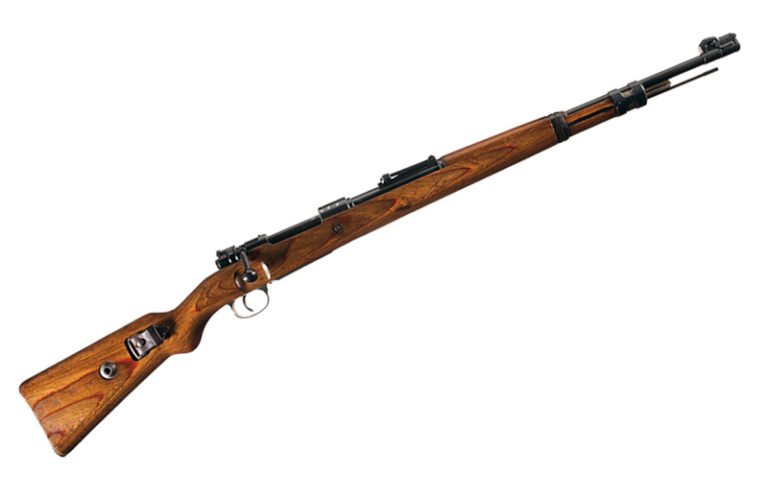
The author does a deep dive into the German Karabiner 98k and discusses why it’s likely the best infantry bolt-action rifle to ever see combat.
Brilliant ideas often do not materialize overnight, nor is their significance always immediately understood. Usually, it takes time, revision, testing, and incremental changes before they can be fully realized, and that is exactly how the story of the Karabiner 98k plays out.
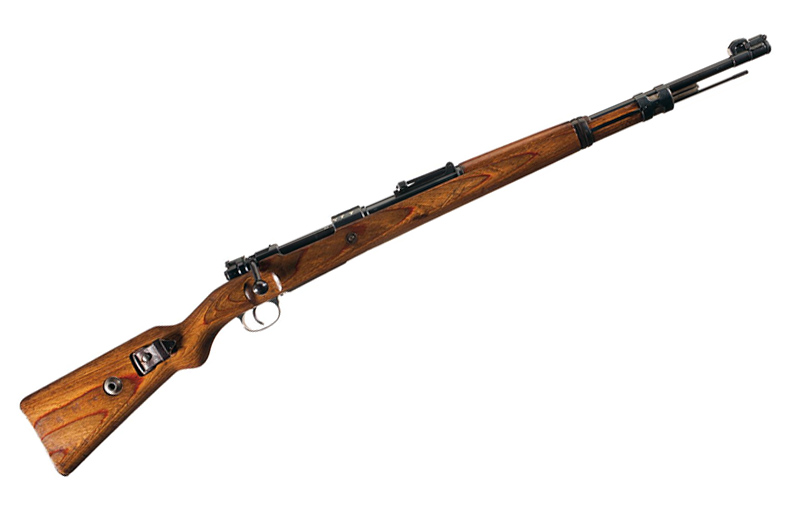
Paul Mauser revolutionized combat rifle technology in the late 19th century by producing what would become the most storied family of bolt-action rifles ever made. Mauser’s first rifle designs emerged in the days of black powder cartridges and evolved as spire point bullets and smokeless powder came into use. His rifles were so well built, reliable, safe and accurate that legions of countries armed themselves with Mauser rifles throughout the 19th and 20th centuries.
These include Argentina, Austria, Belgium, Czechoslovakia, El Salvador, Estonia, Israel, Japan, Latvia, Poland, Portugal, Romania, and Saudi Arabia just to name a few. Take a globe, spin it and stop it with your finger. The country your finger lands on more than likely was armed with a Mauser bolt-action rifle at one point or another, and that’s only counting military rifles. If you include civilian sporter-style Mausers too, hunters have used and loved them on every continent for just as long, including through today.
Evolution Of Mauser Rifles
The first successful Mauser rifle was the Model 1871, a single-shot bolt-action chambered in a metallic-case 11.15×60 mm R blackpowder cartridge. It featured a wing safety and the bolt locked up with the receiver bridge. An improved, repeater version with a tubular magazine was introduced in 1884 and called the 71/84. The 71/84 was adopted by the German Empire and renamed the Infanterie-Gewehr 71. A modified version of this rifle called the Mauser Model 1887 was made for Turkey as well.

Increased Firepower
Enhanced designs began to roll out of the Mauser factory with each succeeding model improving upon the previous. In the early 1880s, more powerful smokeless powder rapidly replaced black powder cartridges. Mauser designed two different variations of the same rifle for the German Rifle Test Commission (Gewehr-Prüfungskommission), but these rifles were not ready for prime time due to the death of Paul Mauser’s brother, Wilhelm, who was the financier of the company. These two rifles became known as the 89 Belgian Mauser and the 91 Argentine Mauser. The most notable improvement was the ability to load the internal box magazine via stripper clip, greatly increasing the Mauser’s rate of fire.
Another upgrade was the new 7.65x53mm Mauser chambering, a first-generation smokeless powder cartridge that used pointed, spire-style bullets. The next feature to evolve was the claw extractor introduced with the Model 92. The Spanish Mauser or Mauser Model 1893 would receive the iconic controlled feed action, a feature that is now synonymous with Mauser rifles. The claw extractor on the bolt grips the rim of the cartridge before the round is stripped from the magazine into the chamber. This model was adopted by Spain, the Ottoman Empire, and other countries.
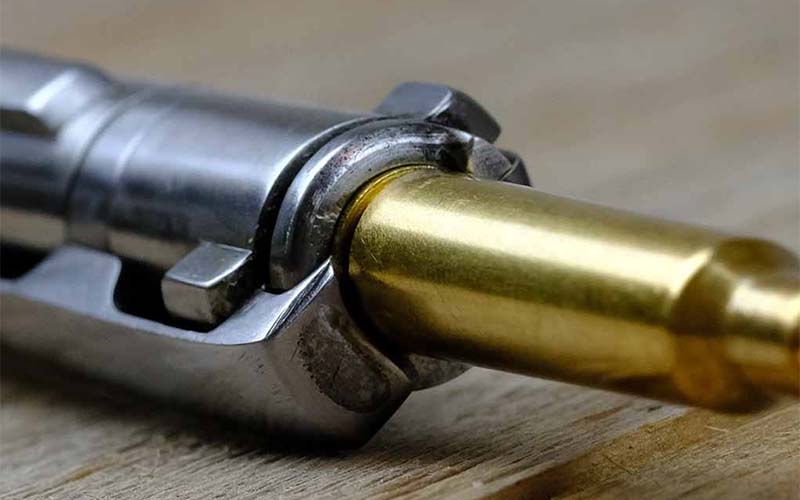
The model 93 introduced a new 5-round, staggered-column, internal box magazine that could be reloaded quickly by pushing a stripper clip from the top of the receiver with the bolt open. It also debuted with another new caliber design by Mauser, the 7x57mm cartridge that is more commonly known as 7mm Mauser. The Model 94 followed and was adopted by Sweden. The Model 1895 deviated from the Model 1893 by using an improved cylindrical bolt face in lieu of the square bolt face of the Model 93. The Model 1895 also incorporated a shoulder behind the bolt handle in order to provide additional locking in case of bolt failure. It was used by Chile, China, Iran, Serbia, and Uruguay among other countries.
In 1893, both Sweden and Norway adopted the new 6.5x55mm cartridge, known as the 6.5mm Swede, and Mauser chambered the Model 1896 rifle in this caliber. This Mauser design also added gas-escape holes and an integral guide rib on the bolt body.

Baptism In The Trenches
By 1898, the Mauser design morphed into the Gewehr 98 and what could be called the prequel to the most successful Mauser ever produced. The Gewehr 98 was adopted by the German Army in 1898 and was in service until 1935. It featured an internal box magazine that was fed by a 5-round stripper clip and incorporated the Mauser controlled-feed action. It weighed about nine pounds, had a 29-inch-long barrel and a total length of 49.2 inches. The Gewhr 98, like all Mauser rifles before it, had a straight bolt handle that jutted out at a ninety-degree angle on the right side of the rifle. This rifle was used by German forces during the First World War, but due to its long length, it proved to be a hindrance in the cramped conditions of trench warfare.

The Gewehr 98 was chambered for the Patrone 88, or M/88, a rimless bottleneck 8mm cartridge and another first-generation smokeless propellent caliber. It was loaded with a 225-grain round-nose, full metal jacket bullet and produced muzzle velocities of about 2,034 fps. The maximum effective range was about 550 yards. This round was used by the German military until 1904 when it was replaced by the S Patrone cartridge, best known as 8mm Mauser (also known as 7.92x57mm and 8x57mm).
The Karabiner 98k: A Better Mauser

The Karabiner 98k evolved from the Gewehr 98, and the name should already give you an idea about the new rifle’s features. It was called a Karabiner (carbine) rather than Gewehr (rifle), and the “k” suffix stood for “kurz”, meaning short. Also commonly referred to as the Kar98k, 98k and K98k, the Karabiner 98k was adopted by the German Wehrmacht as its standard service rifle in 1935. It featured a shorter 23.6-inch barrel, a controlled-feed action and a 5-round internal magazine loaded via stripper clips. Single rounds could also be loaded by pushing them into the magazine with your thumb.
The action was simplified and used only 29 parts. By comparison, the Gewehr 98’s used 44 parts. Additionally, the bolt handle was turned down to facilitate rapid operation and allowed for mounting an optic on the receiver. It has a ninety-degree lift with two locking lugs that mate inside the receiver at the 12 and 6 o’clock locations. The controlled feed action uses a non-rotating extractor that grasps the cartridge by the rim when loading and unloading, and the receiver was made of steel forgings which were then machined.
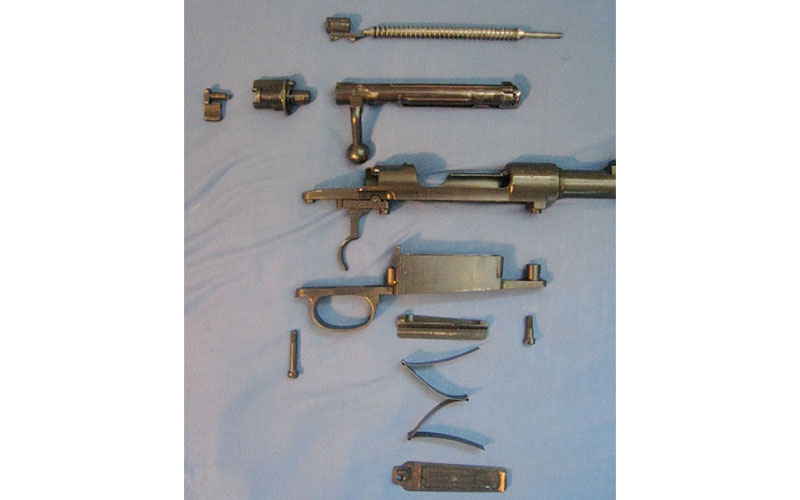
The three-position manual safety was also simple and user-friendly. It flicked to the left to fire, straight up to prevent firing but allow the bolt to be manipulated and to the right to lock both the firing pin and bolt. The middle position served as a sort of dashboard dumb light as it obscured the sights, informing the user that they need to switch it to fire or safe. In another good design choice, the location of the safety allowed for it to be easily manipulated by the firing hand thumb.
The Langevisier, or rollercoaster rear sight, of the Gewehr 98 was replaced with a tangent leaf sight on the K98k. This new sight was flatter and did not obstruct the view on the sides when aiming as the older sight did. Starting in 1939, the front post sight incorporated a hood as well to reduce glare and protect the front sight post. These sights offered a good field of view for combat, but they did not lend themselves as well to precise aiming.
Early Karabiner 98k rifles had a one-piece wood stock but starting in 1937 they used a beech wood laminate stock that was stronger, more immune to warping and cheaper to manufacture than hardwood. The stock also featured a steel buttplate and a metal disc attached to the side of the buttstock that was used to disassemble the bolt.
It didn’t take long after production of the Karabiner 98k started for it to begin being recognized as the preeminent combat bolt-action rifle. Its brilliance was in its simplicity, strength, safety and accuracy, eventually leading to some 14.6 million K98k rifles being produced. World War II began in 1939, just four years after its adoption, yet all branches of the German military were geared up with the latest Mauser when it came time to use them.
8mm Mauser
The 7.92x57mm Mauser caliber was used by Germany in both World Wars. The M/88 round used in the Gewehr 98 was a first-generation smokeless powder cartridge and did not take advantage of the newer spire-point bullets being developed. The German military developed the S Patrone to leverage the new developments in bullet shape and smokeless powder. The “S” stands for the German word for spire point bullet and “Patrone” means “cartridge”. This cartridge used a 153-grain bullet with new smokeless powder that increased muzzle velocity to about 2,881 fps, significantly greater than the older M/88 cartridge.
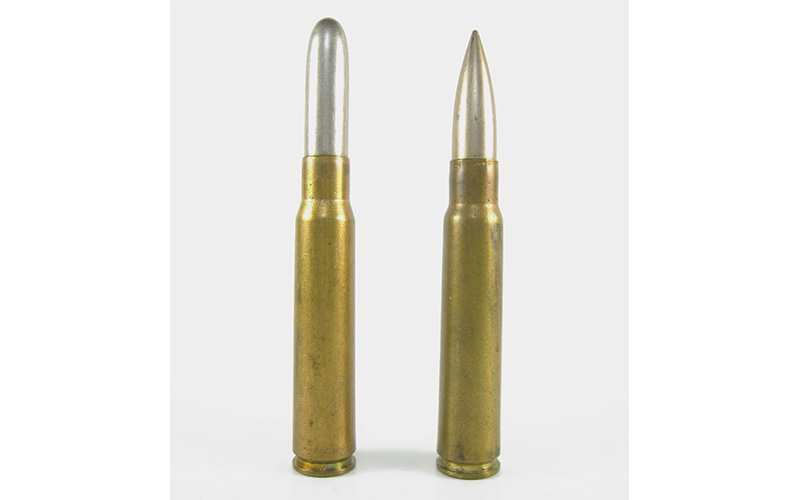
The bores of Karabiner 98k rifles were also redesigned to be more compatible with the new 7.92x57mm round. This was necessary as the S Patrone bullet had a diameter of .323 inches while the bullet diameter of the M/88 round was only .318 inches.
The S Patrone was phased out in 1933 and replaced with the s.S. Patrone, a cartridge originally used for long-range machine guns during WWI. It was loaded with heavy, pointed, full metal jacket 198-grain bullets. This round produced less muzzle flash out of the shorter barrel Karabiner 98k than S Patron, and it offered better ballistic performance than most other rifle cartridges during WWII. Out of the K98k, it produced a muzzle velocity of about 2,493 fps and the bullet could penetrate 33 inches of dry pine wood at 109 yards. Effective range with open sights was 550 yards and with an optic it could reach out to slightly over 1,000 yards.
Lead was scarce in Germany during the war, so the S.m.E. round was developed in 1940 that used a spitzer 178-grain bullet with a mild steel core.

Wartime Production Ramp-Up
Mauser did not produce all of the 14.6 million Karabiner 98k rifles manufactured, as the surge in production from 1934 to 1945 required others to contribute as well. The receivers were stamped with a numerical factory code indicating the date and location of manufacture. In 1937, the numeric code was changed to letter codes.
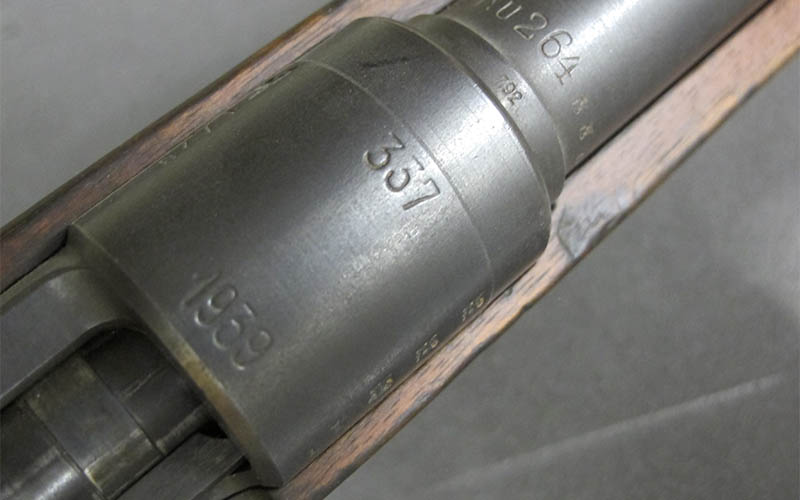
Besides the Mauser facilities in Oberndorf (factory codes: 42 ; svw45 ; byf) and Borigwalde (243 ; ar), other manufacturers included Erfurter Maschinen- und Werkzeugfabrik known as ERMA (27 ; ax), Sauer & Sohn (147 ; ce), Berlin-Lübecker Maschinenfabrik (237 ; duv), Gustloff Werke (337 ; bcd), Steyr-Daimler-Puch (660 ; Enz) and Waffenwerke Brünn (945 ; swp45 ; dot). These factories were scattered primarily throughout Germany, but in some occupied territories as well.
Born For Battle
The Karabiner 98k saw use by the German military in all theaters in which they fought: Europe, North Africa, the Soviet Union, Finland and Norway. At the start of the war, the K98k fought against similar slow-firing bolt-action weapons such as the British Lee-Enfield and the Soviet Mosin-Nagant. While the Mauser with its 5-round capacity was at a disadvantage compared to the faster-shooting Lee-Enfield and its 10-round magazine, it still managed to hold its own. However, when pitted against semiautomatics like the M1 Garand, it was clearly outmatched.
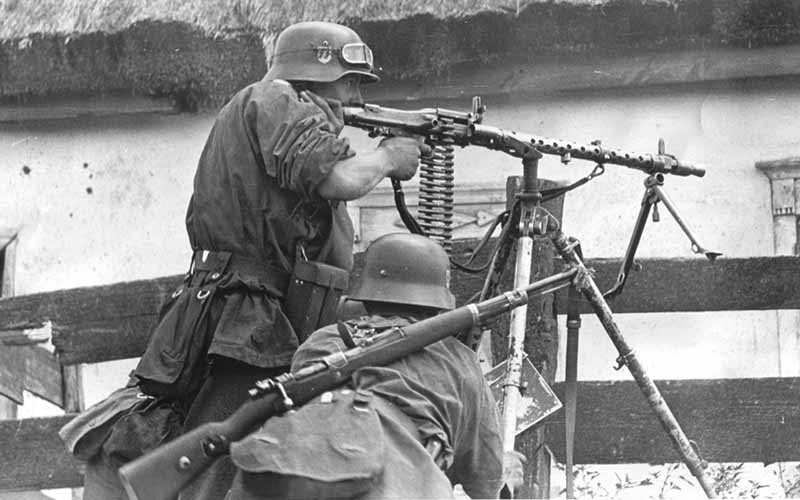
This isn’t said to denigrate the Karabiner 98k, as the downfall of all bolt-action combat rifles was the advent of semiautomatic rifles and select-fire weapons that were introduced toward the end of the war. The K98k was never updated during the war, but it was cheapened and simplified to decrease production costs and time. Known as Kriegsmodell variants, the changes implemented were steps back, not forward. Germany, like other countries, focused most of its efforts on manufacturing more modern self-loading firearms rather than on improving the Mauser.
To non-Germans, captured K98k rifles were as good as gold, and they were used by every resistance and partisan group that could get its hands on some. The Soviet Army also used captured Kar98k rifles due to small arms shortages early in the war.
Karabiner 98k Wartime Variants
Perhaps the most iconic K98k variants are the sniper models. Some rifles that were exceptionally accurate during factory testing were set aside and fitted with a Zeiss Zielvier 4× (ZF39) telescopic sight, giving the rifle an effective range of over 1,000 yards. Other 6x and 8x power optics were used as well as optics manufactured by Ajack, Hensoldt, Kahles and Opticotechna Dialytan. About 132,000 of these sniper variants were produced.
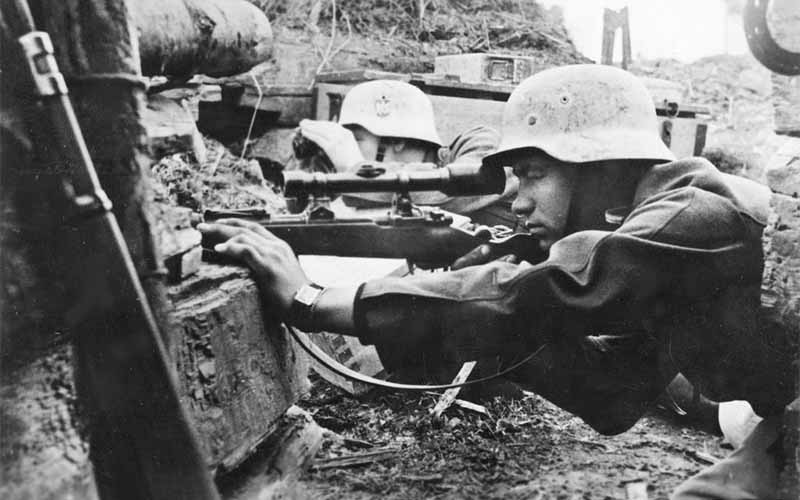
A designated marksman variant known as the K98ks was developed as well, and this was outfitted with a 1.5x power Zf 41 scope. This scope had a long eye relief and was mounted forward of the receiver, scout rifle style, via a quick-detach lever.
Other wartime variants included some experimental designs such as paratrooper models and a .22-caliber training version known as the KKW cadet rifle.
Post-War Service
When World War II ended, many Karabiner 98k rifles had been captured by the Soviet Union and sent to Soviet arsenals to be refurbished. The USSR would go on to supply allied governments with these rifles (and other captured German and Soviet-produced weapons) during the Korean and Vietnam wars where they would be used against Americans once again.
The K98k was in such abundant supply after WWII that plenty of other nations continued to use them as well, on both sides of the Iron Curtain. From East to West Germany, Yugoslavia to Israel, the K98k still saw widespread use for many years after Nazi Germany’s defeat.
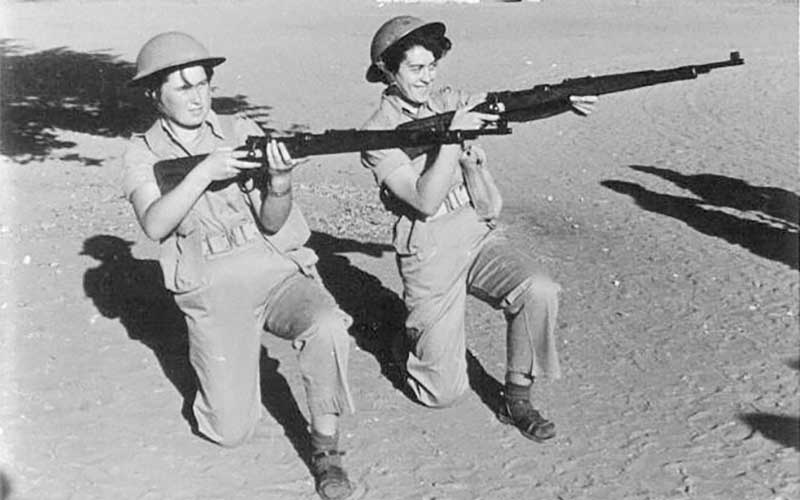
Refurbished Yugo Mausers
Yugoslavia was in dire need of weapons after WWII ended. Zastava, a Yugoslavian arms maker, refurbished German Karabiner 98k rifles to help fill the gap. These rifles can be identified by the Yugoslavian communist party crest and by the “/48” that was added to the “Mod.98” designation originally stamped on the receiver.
Austria also modified surplus K98k rifles into sniper rifles in 1958, designating them as the SSG 98k. These rifles were rechambered in 7.62x51mm NATO, given free-floated barrels, bedded in sporting style stocks and fitted with Kahles ZF 58 4×41 optics.

Collecting Mauser Rifles
The glory days of collecting inexpensive Mausers have gone the way of the rotary dial phone. Those for sale today are almost exclusively either incredibly expensive, in extremely poor condition, or both.
In 2023, you can expect a Karabiner 98k in NRA good condition to cost well over $1,000. A well-used K98k, one with a dented stock or pitted metal that might be suitable for a weekend shooter or a wall hanger, will be in the $500 to $700 range. For those who just want a facsimile of a K98k and don’t care about its country of origin, the Zastava M48 is a much more affordable option.

The Mauser Legacy
The Karabiner 98k owes its stature as the best combat bolt-action to all the Mauser rifles that came before it. That took a lot of R&D. While the famous Karabiner was at the top of its class at the start of WWII, all bolt-actions were well on their way out as infantry weapons by the war’s end. Despite this, thanks to its massive production numbers, the K98k saw combat longer than most would have expected, continuing through today and likely far into the future as well. Even if that’s mostly in the hands of non-state actors now, Mauser’s legacy lives on.
More Historical Military Rifles:
- The StG 44: Father Of The Modern Combat Rifle
- SKS: Collecting & Identifying The Simonov
- All About The Mosin Nagant
- The Gewehr 43: The Road To Germany's Garand
- Fusil Automatique Leger: Everything You Want To Know About The FN FAL
- Lee Enfield: The Right Arm Of The Empire
- The Rise And Fall Of The AR-10
- The M1 Garand: America's Original Battle Rifle

Next Step: Get your FREE Printable Target Pack
Enhance your shooting precision with our 62 MOA Targets, perfect for rifles and handguns. Crafted in collaboration with Storm Tactical for accuracy and versatility.
Subscribe to the Gun Digest email newsletter and get your downloadable target pack sent straight to your inbox. Stay updated with the latest firearms info in the industry.

![Best Concealed Carry Guns In 2025 [Field Tested] Wilson Combat EDC X9S 1](https://gundigest.com/wp-content/uploads/Wilson-Combat-EDC-X9S-1-324x160.jpg)


![Best 9mm Carbine: Affordable PCCs [Tested] Ruger Carbine Shooting](https://gundigest.com/wp-content/uploads/Ruger-Carbine-Shooting-100x70.jpg)
![Best AR-15: Top Options Available Today [Field Tested] Harrington and Richardson PSA XM177E2 feature](https://gundigest.com/wp-content/uploads/Harrington-and-Richardson-PSA-XM177E2-feature-100x70.jpg)

Lee Enfield for the win. Sniper variant No. 4 Mk 1 (T) the hand’s down best sniper rifle of WWII.
Funny that the author admits the Lee Enfield is the better combat bolt action rifle than the Mauser in this article. Double the capacity, faster to operate and the No. 4 had a rear peep sight, the Lee Enfield was the better gun.
Could you explain more about the 98k action only having 29 parts vs. the G98’s 44? That doesn’t resonate with my experience with the two rifles.